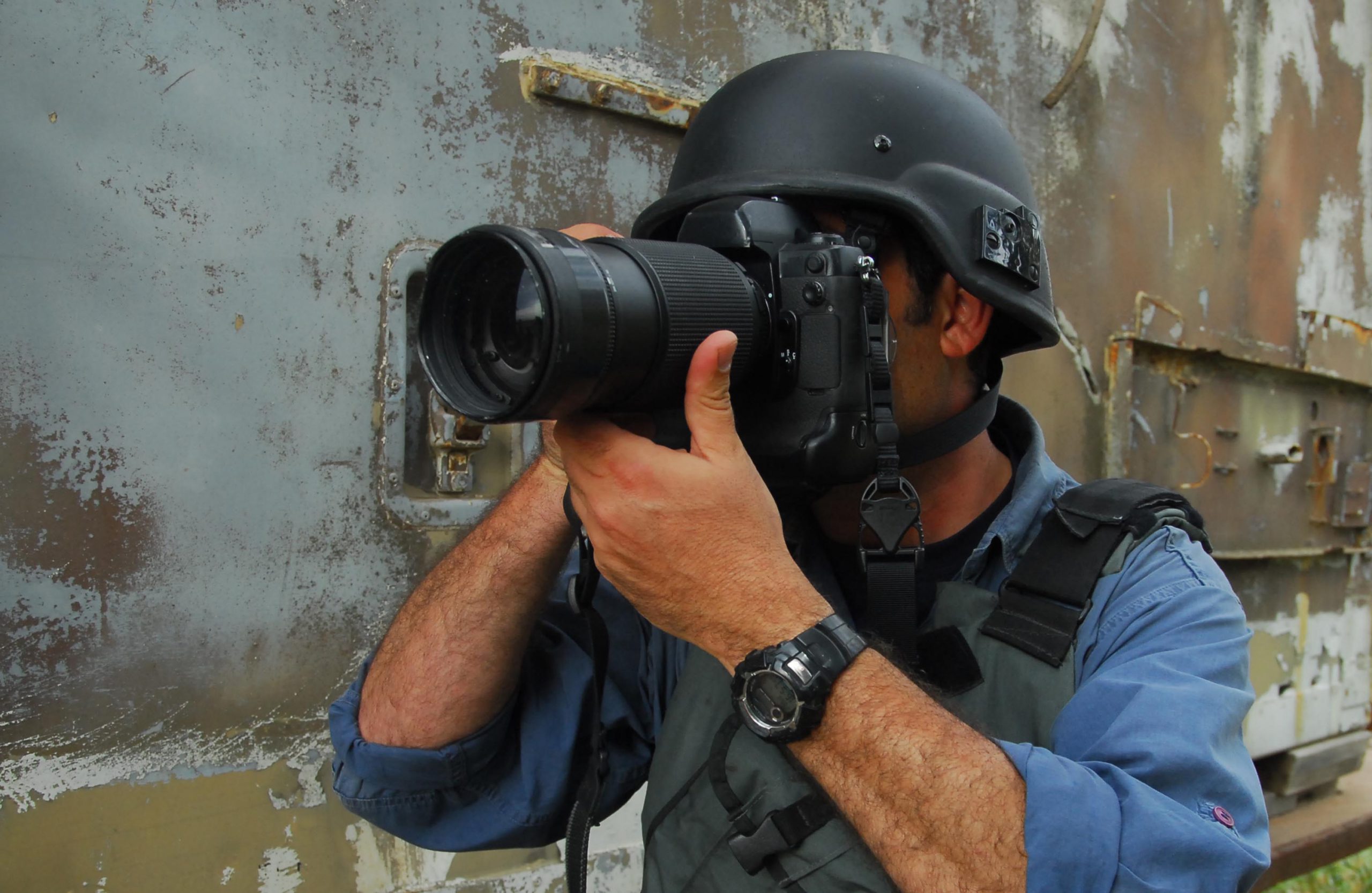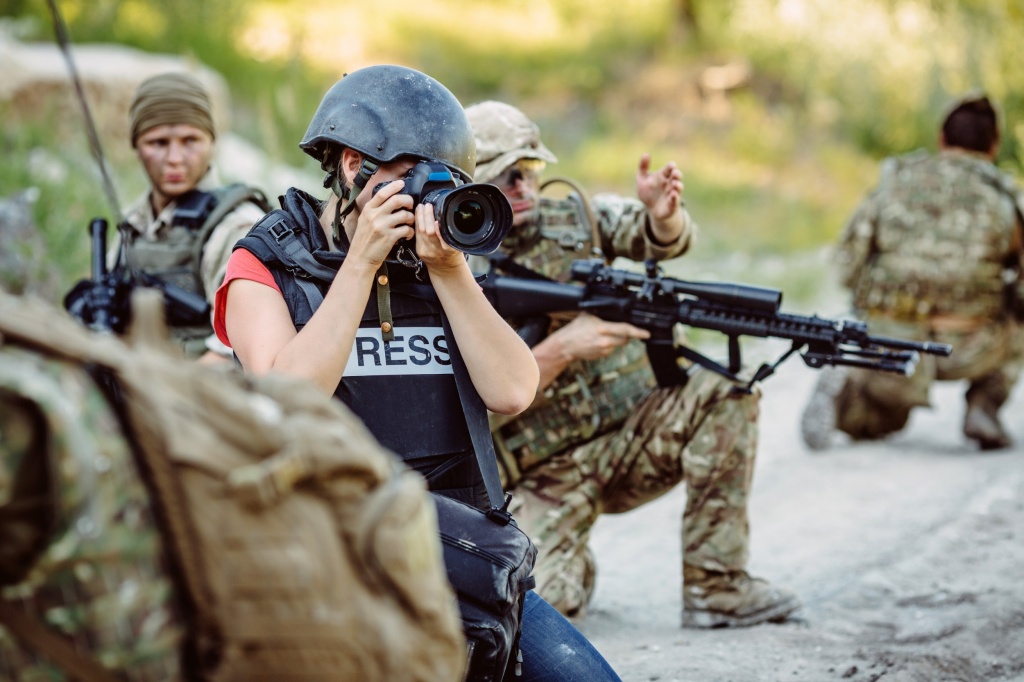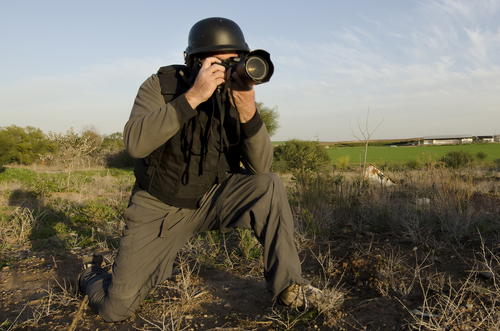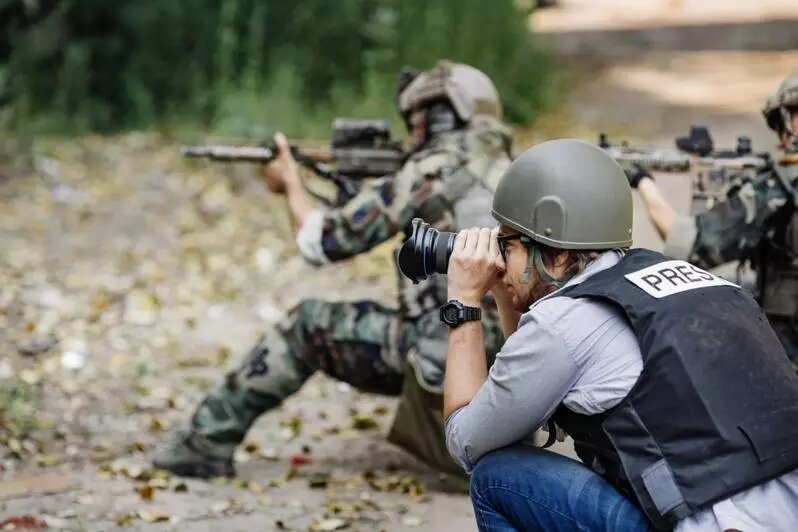War photography has a clear and uniform definition. A definition that requires courage and, of course, conscience. It is called photographing war zones and armed conflicts and the lives and events of the people in this period. In a word, war photography shows the realities of war. Facts that are not visible in themselves, and it is the job of photographers to show them to the public.
Table of Contents
History of war photography
At the outbreak of World War I, photography was still considered the best way to get close to reality. We speak of irrefutable objectivity and, as such, we believe that the snapshot is perfectly suited to reflect the new modern conflict. Thus, throughout its duration, an incalculable number of pictures were taken, using cameras of various formats, by professional photographers or simple amateurs, in this case, soldiers who left with their own equipment. However, among the various subjects treated, photographs depicting battle scenes are extremely rare and often incomplete or imperfect.
The first photographic war reports appear during the Crimean War (1854-55). The first photographs focus mainly on staring at the encampments, officers and soldiers. The extremely long pause time and cumbersome equipment prevent photography from getting into the heart of the action. Expensive developments and reproduction difficulties, on the other hand, prevent it from asserting itself as an independent genre. But, at least, the use of the negatives of the clichés inspires printmaking and invites us to take a fresh look at war. It was not until the years 1860-1870 to see photography begin to compose its own discourse. The development of the mainstream press and technical improvements then gave it a large distribution space and allowed photo reporting to assert itself at the end of the century as a privileged mode of telling the war.
What does war photography include?
Early in this type of photography, photographs of soldiers standing with guns or barracks were mostly taken. This issue later spread to the battlefield. It was then that photos of the lifeless bodies of the people appeared in magazines; But this was not all war photography.
The consequences were much more painful than can be seen in the photo. Ruined houses, scorched earth, homeless children, cries and howls of men and women over their children’s bodies were new dimensions of this type of photography. Most importantly, mothers and fathers who, with pictures of their children in their hands, approach them from soldiers or returned bodies.
Why is War photography difficult to capture?
Its difficulty must be considered for two reasons. First of all, it is possible for a photographer to be killed or injured on the battlefield. Secondly, the type of photos he takes is very important. Photography has been criticized many times for taking a photo. Although he had no bad intentions; But the nature of the photo did not show anything good. That is why this type of photography is among the most difficult.
Is war photography just for the battlefield?
No Incidentally, the photographer’s main job begins after the war. One of the goals of a war photographer is to show the consequences to people’s lives. Consequences that still exist after the end of the war. From a mother who is looking for her child’s body with a photo or has been sitting on the street waiting for him for years. Perhaps these photos show the battlefield directly, But it has consequences in its heart that will be far worse than the field.
Famous war photographers
| Name | Description | Born/Died |
| Roger Fenton | Was a British photographer, noted as one of the first war photographers. Fenton was born into a Lancashire merchant family. Wikipedia
Born: March 28, 1819, Rochdale, United Kingdom Died: August 8, 1869, Potters Bar, United Kingdom |
Born: March 28, 1819, Rochdale, United Kingdom
Died: August 8, 1869, Potters Bar, United Kingdom |
| Nick Ut. | A Vietnamese American photographer for the Associated Press who works out of Los Angeles. | Born: March 29, 1951 |
| Margaret Bourke-White | Was an American photographer and documentary photographer. | Born: June 14, 1904, The Bronx, New York, United States
Died: August 27, 1971, Stamford Hospital – Bennett Medical Center, Stamford, Connecticut, United States |
| Philip Jones-Griffiths | Was a Welsh photojournalist known for his coverage of the Vietnam War | Born: February 18, 1936, Rhuddlan, United Kingdom
Died: March 19, 2008, London, United Kingdom |
| Moises Saman | Is best known for his photographs from Iraq. His book Discordia is about the revolution in Egypt and the broader Arab Spring. | Born: 1974 , Lima, Peru |
| João Silva | Is a Portuguese-born South African war photographer. He is the last working member of the Bang-Bang Club, a group of photographers who covered South Africa from the time of Nelson Mandela’s release to the first elections in 1994. | Born: August 9, 1966 , Lisbon, Portugal |
| Tim Hetherington | Was a British photojournalist. He produced books, films and other work that “ranged from multi-screen installations, to fly-poster exhibitions, to handheld device downloads” and was a regular contributor to Vanity Fair. | Born: December 5, 1970, Birkenhead, United Kingdom
Died: April 20, 2011, Misrata, Libya |
| Don McCullin | Is a British photojournalist, particularly recognised for his war photography and images of urban strife. | Born: October 9, 1935 , Finsbury Park, London, United Kingdom |
| James Nachtwey | Is an American photojournalist and war photographer. | Born: March 14, 1948 , Syracuse, New York, United States |
| Robert Capa | Robert Capa was a Hungarian war photographer and photojournalist. He worked alongside his companion and professional partner, photographer Gerda Taro. | Endre Friedmann; 22 October 1913 – 25 May 1954 |
Importance of war photography
With war photography, there are many moments that are not just moments, many moments that can speak and become historical facts. Many people do photography by taking pictures of various moments whether it’s with a pocket camera, SLR (Single Lense Reflex) camera, or even with a cellphone camera. To produce image documentation that frames every moment.. So the more frequent war photography is also present there.
The most unforgettable war photos in history
- Atomic Bomb, Japan, 1945
- Dr. Fritz Klein stands in the middle of a mass grave in Belsen,1945
- Civilian Resistance, 1943
- Omaha Beach, one of the days of 1944
- Falling Soldiers, Spanish Civil War, 1936
- General Nguyen Loon executes a Viet Cong prisoner, 1968
- Saddam Hussein statue is overthrown in Baghdad, 2003
- Burning Alive in Vietnam, 1972
- A picture of five US Marines and a naval physician was erected in 1945 on top of Mount Suribachi.




